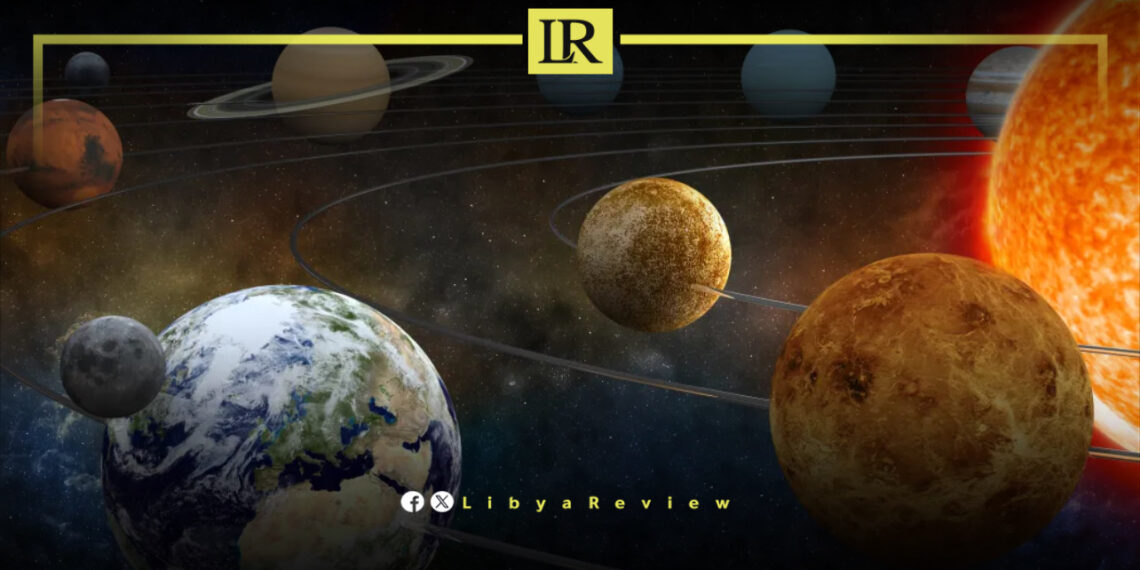The Libyan Remote Sensing and Space Science Center announced that residents across Libya will be able to observe seven planets during November — Mercury, Venus, Mars, Jupiter, Saturn, Uranus, and Neptune. The visibility of each planet will vary depending on its position relative to Earth, as well as local weather conditions.
Planetary visibility details
Mercury
Mercury will appear very low in the southwestern sky shortly after sunset. It will gradually disappear from view as it moves closer to its inferior conjunction with the Sun on November 20.
Venus
Venus will be visible in the southeastern sky before sunrise. Its brightness will steadily decline as it moves farther from Earth and will begin to fade from sight by late November.
Mars
Mars will appear low in the southwestern sky after sunset. Its brightness will diminish day by day until it disappears from view toward the end of the month.
Jupiter
Jupiter will rise in the northeastern sky a few hours after sunset. It will grow brighter each night as it moves closer to Earth, offering a spectacular view for skywatchers.
Saturn
Saturn will be visible immediately after sunset and will set after midnight toward the western horizon. Its brightness will also gradually decrease throughout the month.
Uranus
Uranus requires a telescope to be observed after sunset. Its luminosity will increase until it reaches opposition on November 21, when it will be at its brightest and closest to Earth.
Neptune
Neptune can be seen using a telescope after sunset and will set after midnight in the western sky. Like Saturn, its brightness will gradually fade as the month progresses.
Astronomers note that visibility may vary depending on weather and geography. They recommend using astronomy applications or optical tools to locate the planets precisely.


